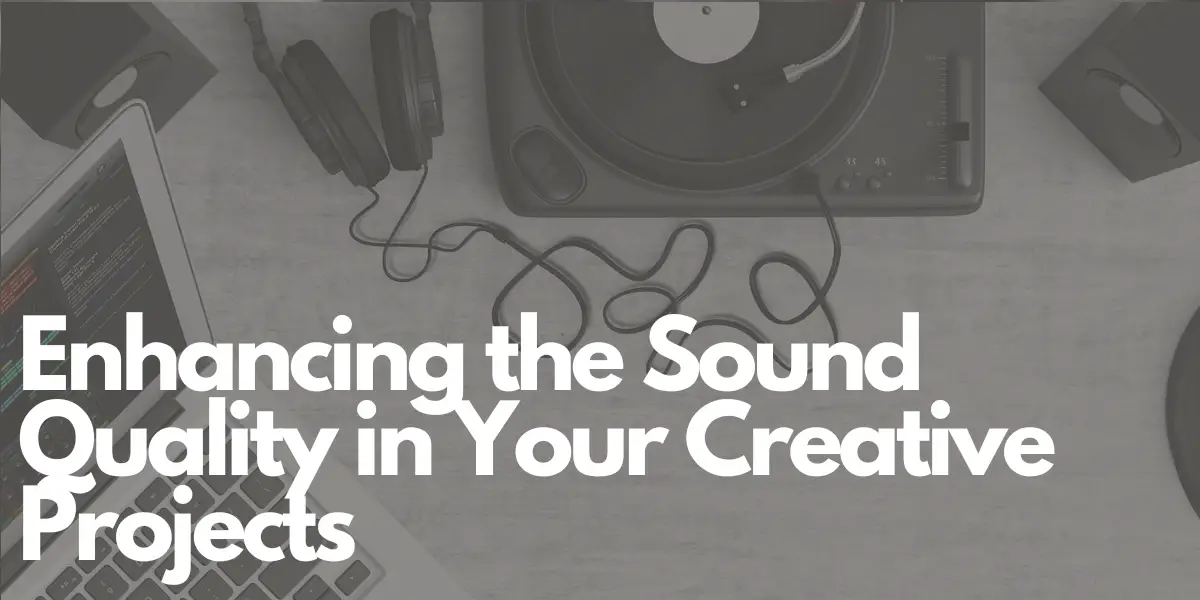Improving the audio quality of your projects, be it videos, podcasts, or narrations, can significantly elevate their overall appeal and professionalism. With the rise in popularity of digital content, especially on social media, there’s never been a better time to invest a little more into your sound. Here’s a comprehensive guide on how to achieve better audio.
Understanding the Hardware
Most laptops come with built-in microphones suitable for video calls. However, when it comes to recording content, external microphones are the way to go. They offer better sound clarity and fidelity. Popular models like the Yeti by Logitech and the Shure MV5 come highly recommended. These plug into your computer’s USB port. If you’re experiencing connection issues, a quick check of your computer’s sound input settings should solve the problem.
Mobile phones are standard tools for recording, especially for social media videos. While the default microphones are decent, external mics offer better clarity. RØDE is one such brand offering phone-compatible mics. Remember to check compatibility with your phone’s port when purchasing. For those looking at more professional tools, digital voice recorders with USB connectivity, such as the Sony UX560 or Zoom Corporation’s H1n-VP model, are viable options.
Additionally, invest in a good pair of headphones. They can significantly help during the editing phase. Moreover, always aim to record in quiet environments, devoid of unnecessary background noise.
Exploring the Right Software
For quick audio snippets, default phone apps like Apple’s Voice Memos or Google’s Android Recorder work just fine. There are also third-party applications like Dolby On available for both Android and iOS.
When diving deeper into podcasting, various platforms offer tools specifically for this medium. Spotify for Podcasters and Spreaker’s podcast studio apps are worth looking into. Podbean’s audio recorder is especially useful for recording remote guests. For those intrigued by podcasting, there are various free guides online to kickstart your journey.
Services like Riverside provide tools for long-distance interviews and store each track separately, ensuring the audio remains glitch-free even with slow internet. There’s also Zencastr, offering similar features but with only an iOS app currently.
If you’d like to record directly onto your computer, Adobe Audition and Avid Pro Tools cater to professional needs. However, for beginners, free software like Audacity or Apple’s GarageBand are more than adequate. Apple’s iMovie program also allows for voice-over narration for videos.
Diving into Editing
When you’re ready to edit, your sound file will be displayed as waveforms in the software. These waves represent different audio levels. Editing entails manipulating these waveforms. With this, you can edit out unwanted disruptions, adjust speaker volumes, or even add background music.
Editing might sound complex, but there are plenty of resources to help. Platforms like Audacity and GarageBand provide extensive tutorials for beginners, simplifying the entire process. Investing time in learning will prove beneficial, allowing you to produce crisp and clear audio.
In conclusion, the realm of audio recording and editing might seem vast, but with the right tools and a bit of patience, anyone can produce high-quality sound for their projects. The best part? Many of these tools are budget-friendly, ensuring everyone gets a chance to sound their best.
Author: Mike P
Hi! My name is Mike! I’ve been an apartment producer/musician for 10+ years. I’ve played in punk bands, released EDM tunes on Beatport and iTunes, and have a semi-successful stock music portfolio. Read more…



